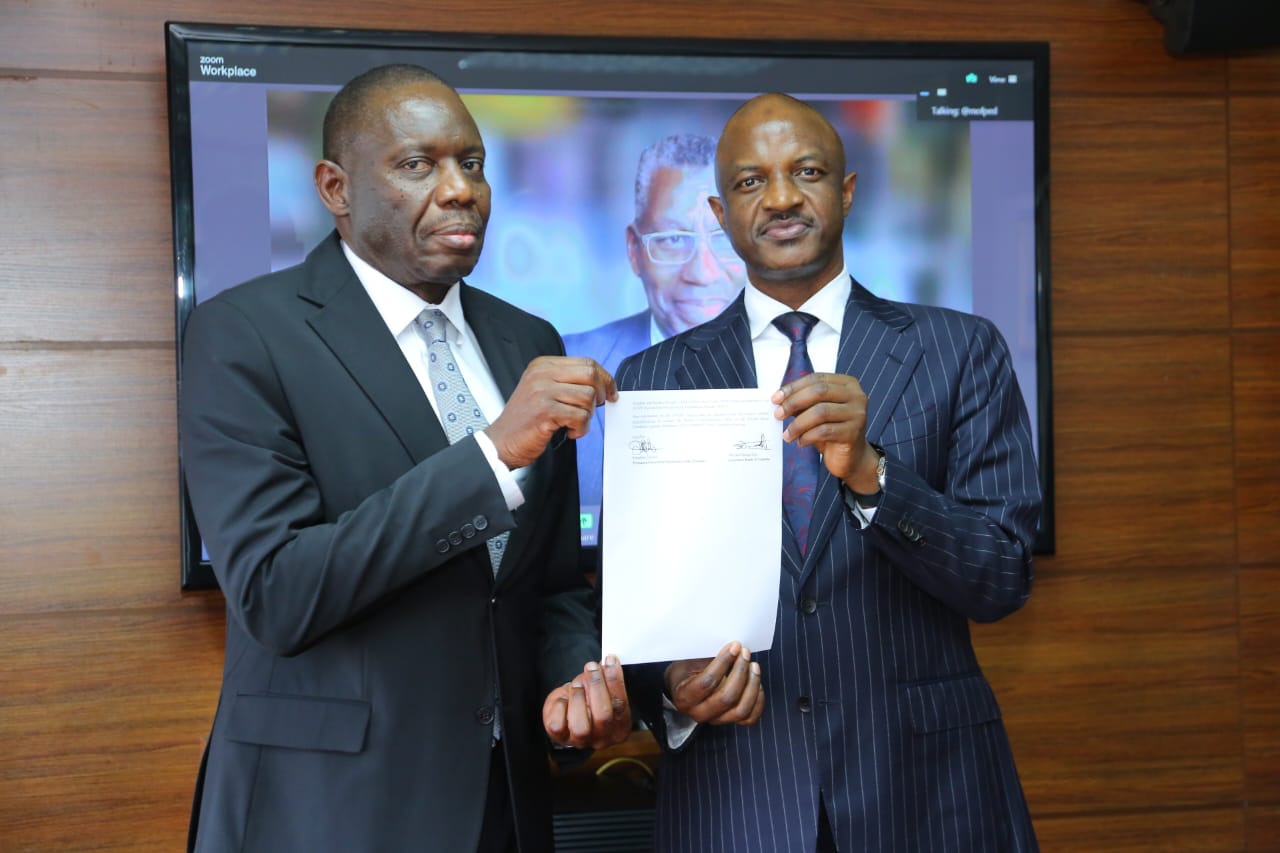In the canon of national transformation narratives, few African leaders have etched an economic philosophy as distinct and pragmatically aligned to domestic realities as President Yoweri Kaguta Museveni. Musevenomics—a term increasingly gaining intellectual traction in policy and academic circles—is far more than a coinage of convenience. It encapsulates a developmental creed, a doctrine of homegrown pragmatism, and a deliberate departure from rigid economic prescriptions. It is President Museveni’s economic legacy—an enduring imprint on Uganda’s national transformation journey.
What is Musevenomics?
Musevenomics is the customized economic governance framework pioneered and sustained by President Museveni over nearly four decades. Rooted in Uganda’s unique post-conflict recovery context, it fuses elements of liberalization, strategic nationalism, state-led investment, and rural development to stimulate inclusive growth and structural transformation.
Neither bound by capitalist orthodoxy nor socialist rigidity, Musevenomics emerges as a hybrid model—responsive to circumstance and centered on peace, stability, market access, and targeted state intervention. Its ideological foundation rests on self-reliance, productivity, and internal security as the bedrock of sustainable development. Strategic sectors like energy, infrastructure, ICT, and agriculture form the pillars of its long-term growth agenda.
Origins and Strategic Pillars
The genesis of Musevenomics can be traced back to the 1980s, when Uganda was emerging from economic ruin. As many developing countries embraced sweeping structural adjustment programs prescribed by Bretton Woods institutions, President Museveni opted for selective liberalization, cautiously deregulating sectors such as telecommunications and banking while preserving strategic state influence in oil, electricity transmission, and industrial planning.
The key pillars of Musevenomics include:
- Security Before Prosperity: Stability is seen as a precondition for growth. This foundation has nurtured investor confidence and facilitated multi-sectoral planning.
- Bottom-Up Rural Transformation: Programs like the Parish Development Model (PDM) anchor development at the village level, challenging the traditional top-down frameworks.
- Strategic Nationalism: While welcoming foreign direct investment, Musevenomics ensures that core national assets remain under Ugandan stewardship.
- Infrastructure-First Doctrine: Contrary to models that posit infrastructure as a result of growth, Museveni places it at the starting line—viewing roads, electricity, and ICT as enablers, not outcomes.
- Youth Skilling and ICT-Driven Industrialization: Uganda’s demographic advantage is leveraged through vocational education and the growth of digital innovation hubs.
Comparative Context: Musevenomics vs Other Economic Theories
Musevenomics does not exist in isolation. It borrows elements from major economic schools but selectively adapts them to fit Uganda’s historical, social, and geopolitical landscape.
| Theory | Core Idea | Musevenomics’ Position |
| Keynesian Economics | Govt spending to stimulate demand during downturns | Supports state investment, especially in productive infrastructure, rather than consumption subsidies |
| Neoliberalism | Emphasizes free markets and privatization | Embraces market mechanisms but rejects full privatization of strategic sectors |
| Marxist-Socialism | Advocates for state ownership and class struggle | Musevenomics rejects socialism, favouring a mixed economy |
| Structural Adjustment Programs (SAPs) | IMF-driven liberal reforms | Moderated SAPs to retain policy autonomy while embracing select reforms |
| East Asian Tigers Model | Export-led growth with strong state guidance | Closely aligned, especially through industrial parks ad human capital development |
Musevenomics is not ideologically purist. It is experimental yet structured, ideological yet empirical—embodying policy autonomy while integrating useful global best practices.
Measurable Outcomes and Long-Term Vision
Musevenomics is not merely theoretical; it has yielded tangible progress across sectors, embedded in long-term strategies like Vision 2040 and successive National Development Plans (NDPs).
- Electricity coverage rose from 5% in 1986 to over 60% in urban areas.
- GDP growth averaged over 6% pre-COVID.
- ICT sector development has birthed robust e-government platforms.
- Oil infrastructure, including the EACOP and refinery, remains state-controlled.
- Industrial base expansion through Special Economic Zones and strategic partnerships.
Museveni’s model treats economic transformation as a process, not an event—focusing on empowering the informal sector, skilling youth, protecting sovereignty, and building local capacity.
Uganda GDP Growth Trends (1990–2024)

This consistent performance illustrates that Musevenomics has nurtured an economy no longer defined by aid dependency but by deliberate planning, self-belief, and gradual institutional growth.
The Forward Trajectory
As Uganda eyes upper-middle-income status by 2040, Musevenomics remains a guiding compass. It prioritizes internal resilience over donor reliance, productivity over mere consumption, and human capital development over extractive exports.
Rising Nation Magazine, which documents Uganda’s transformation journey, identifies Musevenomics not merely as an economic policy but as a national doctrine—one that offers a replicable model for countries navigating the complex path from fragility to sovereignty
The strategy now extends to industrial value addition, regional integration, and export diversification, with NDP IV building directly on Musevenomic principles. It signals a deliberate effort to move Uganda from primary commodity dependence to a sophisticated, innovation-driven economy.
A Signature Doctrine of the Ugandan State?
Just as Nyerere’s Ujamaa and Nkrumah’s African Socialism became iconic ideologies, Museveni’s Musevenomics stands as a uniquely Ugandan contribution to postcolonial economic thought. Yet, unlike its predecessors, Musevenomics is non-dogmatic. It evolves—accommodating global shocks, pandemics, technological revolutions, and shifting geopolitics.
Uganda’s current developmental trajectory is not coincidental. It is the consequence of deliberate, strategic economic engineering. From oil fields in Bunyoro to roads & mineral mining in Karamoja, from digital skilling hubs in Kampala to irrigation schemes in Teso, Musevenomics is the invisible hand shaping visible outcomes.
It is the legacy of a leader who understood that transformation requires both vision and the resolve to walk alone when necessary—and the wisdom to walk together when possible.
Tensions and Trade-offs in Musevenomics
Musevenomics, while credited with ushering in stability, consistent economic growth, and strategic investment in infrastructure and human capital, is not without its shortcomings. A critical area of concern lies in the over-centralization of economic power within the presidency, where technocratic institutions such as the Bank of Uganda and Uganda Investment Authority often serve more as executors of executive directives than as independent policy agencies. This concentration of power diminishes institutional autonomy, hampers policy continuity, and limits innovation at decentralized levels of governance.
A significant pillar of Musevenomics has been the recognition and empowerment of the informal sector. However, this sector, which employs more than 70% of Ugandans, has not undergone the structural transformation necessary for long-term sustainability. Without a transition into formalized, tax-contributing enterprises—through access to finance, training, and regulation—the informal sector remains largely low in productivity and excluded from Uganda’s formal economic growth narrative.
Youth empowerment initiatives, including EMYOOGA, the Youth Livelihood Programme (YLP), and the Parish Development Model (PDM), represent large-scale interventions that embody Museveni’s bottom-up economic philosophy. Yet critics highlight that these programs have emphasized disbursement volumes over implementation quality. High loan default rates and widespread misuse of funds reflect a lack of financial literacy, limited market access, and insufficient mentorship structures. As a result, empowerment risks devolving into a cycle of dependency rather than fostering true economic liberation.
Another weakness is the underdeveloped industrial policy. While Musevenomics promotes industrialization, it often favors foreign direct investment (FDI) at the expense of nurturing local industries. Consequently, Uganda’s trade deficit persists, and domestic enterprises struggle to compete with international firms. The import substitution strategy lacks depth, with limited government protection or targeted support for indigenous manufacturers seeking to climb the value chain.
Urban-rural disparities continue to widen despite efforts through rural-focused initiatives like the PDM. Urban centers still receive disproportionate investment and infrastructural attention, prompting increased rural-urban migration. This demographic shift places significant pressure on urban infrastructure, housing, and social services, reflecting a two-speed growth model that contradicts the inclusive vision Musevenomics aspires to achieve.
Implementation bottlenecks also plague the doctrine. Despite sound policy frameworks, corruption and mismanagement have compromised delivery. Auditor General reports consistently uncover public fund leakages, especially within programs designed to uplift youth and grassroots communities. These operational failures threaten to erode the credibility of Museveni’s economic vision, reducing impactful intentions into symbolic gestures.
Furthermore, Uganda’s development under Musevenomics has been substantially supported by donor financing and external loans, particularly in the infrastructure sector. While such support has enabled large-scale development, it raises concerns over debt sustainability. With domestic revenue mobilization remaining below 14% of GDP, Uganda’s fiscal capacity remains constrained, placing future generations under potential debt pressure and limiting the country’s economic independence.
Critically, the durability of Musevenomics as a national economic doctrine is also questioned. While it has succeeded in delivering transformative outcomes during President Museveni’s tenure, doubts linger as to whether it has fostered robust institutions capable of carrying the vision beyond his leadership. Without institutional ownership and systemized policy continuity, the achievements of Musevenomics may not withstand political transitions.
As macroeconomic analyst Dr. Paul Lakuma aptly notes, “Musevenomics is neither a textbook economic model nor a populist manifesto—it is a hybrid ideology rooted in historical experience, political control, and pragmatic development. But for it to become a lasting legacy, it must evolve into an institutionally-owned national doctrine, not just a presidential blueprint.” This balanced view encapsulates both the promise and the unfinished business of Musevenomics, highlighting that while the journey of Uganda’s transformation has made historic strides, its future success depends on addressing these structural limitations.






